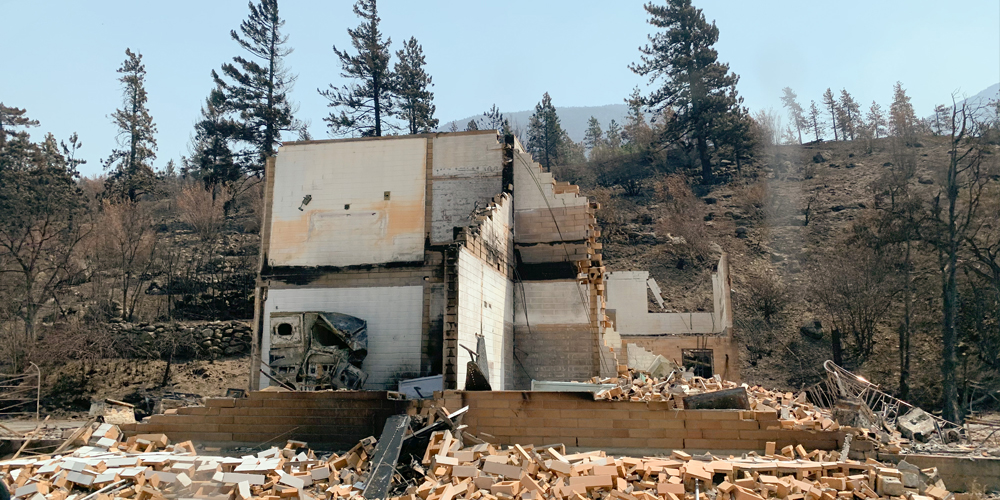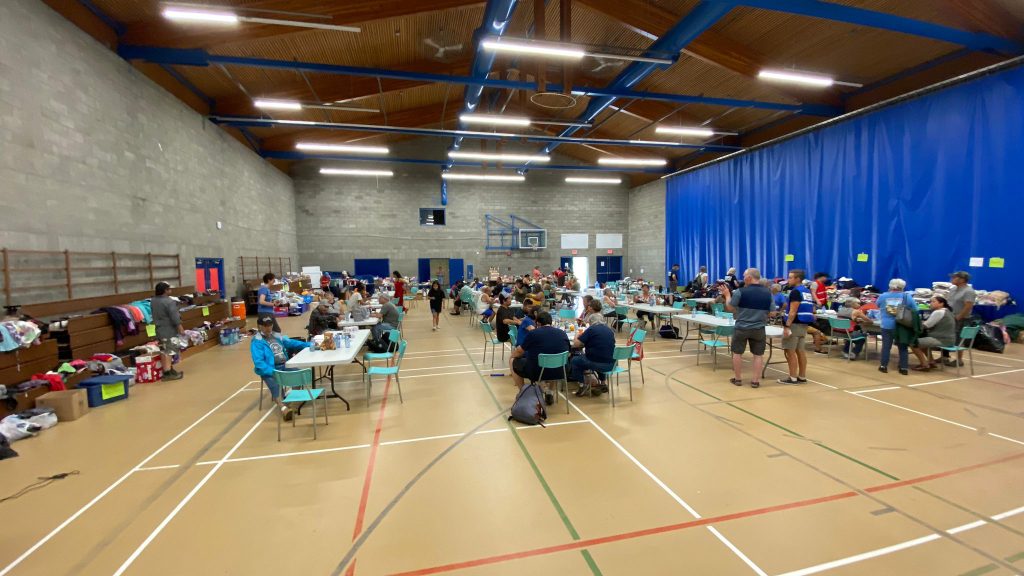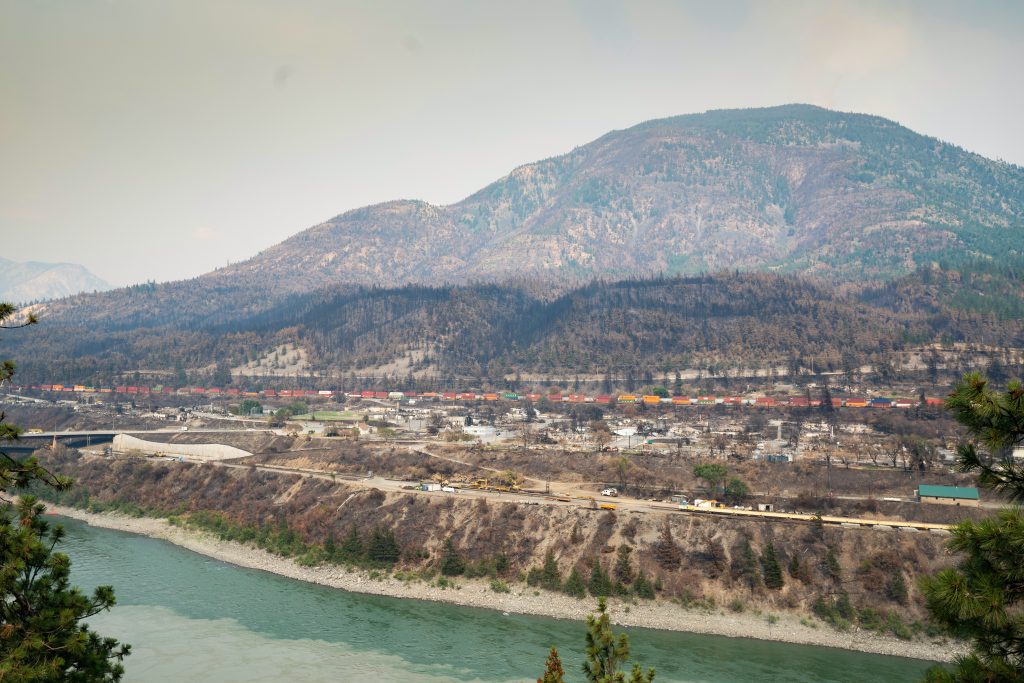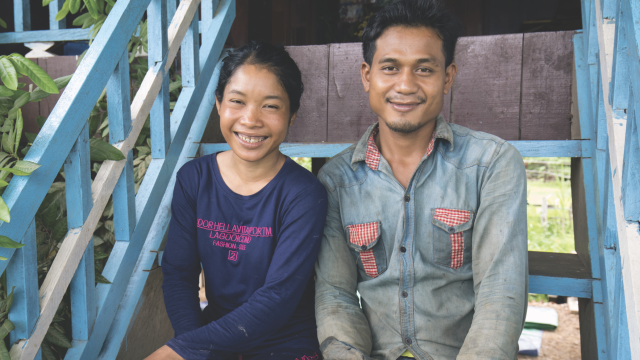For the village of Lytton, British Columbia, Canada, months of dry weather conditions were followed by a massive heatwave in the waning days […]

For the village of Lytton, British Columbia, Canada, months of dry weather conditions were followed by a massive heatwave in the waning days of June that meteorologists called “unprecedented and historic.”
On June 29, at 49.4 degrees Celsius (120.9 °F), Lytton tied with Death Valley, California, as the hottest place in North America. Already well-known as the location of Canada’s highest temperature records, Lytton went on to set an all-time high of 49.6 degrees Celsius (121.3 °F) on June 30. This was the world’s highest temperature ever recorded north of 45 degrees latitude and is hotter than record highs in other European and South American regions. The excessive heat jeopardized the lives of those in the area. Then the fire came.
Lytton, a picturesque little village nestled where the mighty Fraser and Thompson rivers meet, has a population of 250. It is also home to Lytton First Nation (LFN), located on 14,161 acres (5,731 hectares) divided into 56 small reserves. Two of the LFN reserves, Klahkamich and Klickkumchheen, are in the village of Lytton. Others are spread around the vicinity.

Reports from the ground indicate that residents had only minutes to flee after realizing the danger. Lytton mayor Jan Polderman told CBC News that “it took, like, a whole 15 minutes from the first sign of smoke to, all of a sudden, there being fire everywhere.”
Lytton residents fled in all directions, not knowing which way, if any, was safe. The 71-kmh (44-mph) winds played a leading role in the speed at which the fire spread, pushing it north into the main village of Lytton. In the ensuing days, bewildered and exhausted, evacuees relocated many times in search of safe housing.
The Lytton Creek wildfire scorched about 90 percent of the village of Lytton and was responsible for at least two deaths. It also destroyed properties in the LFN community and thousands of hectares of land in the Fraser Canyon. In the days following the Lytton disaster, reports emerged of more than 300 fires burning across the province and more than 80 out of control. Evacuees not only came from Lytton but all over the region. Many of the fires were still burning in mid-July.
In total, approximately 1,800 people were forced to leave their homes with little notice and few belongings. Staff at Fountainview Academy, an Adventist boarding school located 40 kilometers (25 miles) north of the village of Lytton, were also forced to leave under the emergency evacuation order.
Following the evacuation order on June 30, the British Columbia Conference of the Seventh-day Adventist Church and local church members, in partnership with the Adventist Development and Relief Agency (ADRA) in Canada, sprang into action. In Lillooet, Elaine Roque, ADRA ambassador of the Better Living Centre, led the charge in coordinating meals for evacuees.

Roque said, “When I heard what was happening on the news, I called the Lillooet Friendship Centre. The staff knows me well, so when I asked what we could do to help, I was told they needed food for about 450 people. Thanks to the support from ADRA, donations of fresh greens from Green Dirt Farm, and our amazing team, we prepared a hot meal of rice, lentils, and salad for 450 [people] and served 200 tired, hungry evacuees.”
And those wildfire evacuees will also have a place to stay for the time being. In a supreme act of love and sacrifice, the British Columbia Conference and Camp Hope Conference Centre staff canceled the camp’s summer schedule and event bookings, choosing to open the camp to house and assist wildfire evacuees. “We have enough room here at Camp Hope to house 500 if needed, and thanks to our leadership, supported by the Seventh-day Adventist Church in Canada and ADRA, we’re willing to cancel all bookings indefinitely if the demand is there,” Bill Gerber, Camp Hope manager, said. “What is important is that we’re not just the hands and feet of Christ, but His heart, His eyes, and ears as well.”
Personal Account
At 5:30 p.m. on Wednesday, June 30, Okumu (Charles) Lomudak, pastor of the Better Living Centre/Lillooet Seventh-day Adventist Company and the Merritt and Ashcroft Seventh-day Adventist churches, was on his way home from visiting neighboring Chilliwack. The journey home to his family in Lillooet usually took him through Lytton. On this particular evening, Lytton was ablaze.
“As I approached the town, I could see cars lined up on the opposite side [of the road],” Lomudak said. “They were bumper to bumper; no one was moving. Many people were outside of their cars, in the street, looking back toward the town. I saw smoke but kept driving, not quite sure of what I was seeing, although people were looking at me as though I was crazy going the opposite way.”
The pastor drove up to the town until he met a roadblock. There he parked, exited the car, and took in the scene.
“I got out of the car and started walking toward the roadblock. There was so much smoke and flames. I stood there watching, talking with people who were looking on in disbelief. There was so much visible trauma; I was encouraging them, saying, It’s going to be OK, and praying in my heart that it would be.”
Lomudak was on the scene for nearly two hours. With cellular networks down and electricity cut off, he could not call his family, nor was the police officer with whom he spoke able to tell him when the situation would be resolved. Concerned that his family would be worried about his prolonged absence, he turned his vehicle around, taking a more circuitous route toward home. What would have been, under normal conditions, a 45-minute drive from where he stood took an additional five hours.
Later that day, as Lomudak walked through the makeshift evacuation center at Lillooet Recreation Centre, he read confusion, anxiety, trauma, and fear on the faces of Lytton citizens. He shares, “People were in agony with the realization that they had lost everything. It was such a painful experience. It was heartbreaking to see. It reminded me of my own experience fleeing my burning village in Sudan.”
Helping Those in Need
Following the work done by ADRA teams in response to the Fort McMurray fire in 2016 and the tornadoes that wreaked havoc in eastern Ontario in 2018, ADRA was approached by the British Columbia provincial government to lead in organizing the in-kind donation management for the Lytton wildfires. Directed by Alain Normand, who has more than 30 years of experience as an emergency management professional, ADRA, with the help of the church and local volunteers, will receive, organize, and distribute mountains of goods that are invariably donated following a disaster.
“ADRA has been mandated, through Emergency Management British Columbia, to set up and manage collection points, warehousing, and distribution of in-kind donations in the vicinity of Kamloops, British Columbia. We will manage the volume of goods donated in an emergency and work with agencies like the Canadian Food Bank and other corporate donors to help meet the immense need,” Steve Matthews, ADRA Canada’s executive director, said. “This is part of ADRA’s specialization within the Canadian emergency response arena, and we are recognized for that commitment and expertise.”
Matthews added, “Here in Canada, ADRA is one of several faith-based organizations at work co-operatively to respond to emergencies and disasters. As a member of the Emergency Management NGO Consortium of Canada, ADRA collaborates with several NGOs such as Red Cross and Salvation Army to support and bring relief to vulnerable communities and people across Canada. We are blessed to be called to do this work, supporting local church efforts and larger responses. We are grateful for every volunteer, every member, who is willing to help.”
The original version of this story was posted on the North American Division news site.








